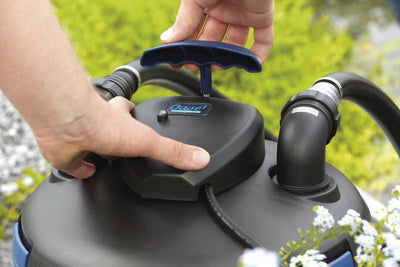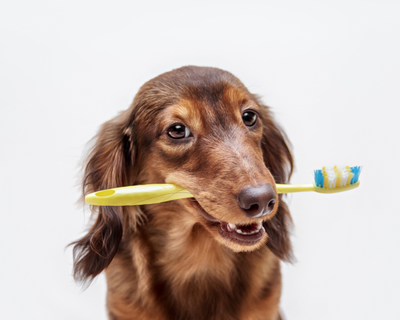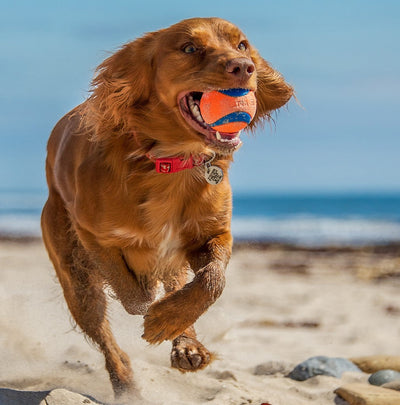If you're a dog owner in New South Wales, Australia, it's important to know the road rules for restraining your pet in the car.
Not only can it help keep your dog safe, but it can also prevent distractions while driving.
Here's what you need to know about restraining your dog in the car in NSW.
Why it's important to restrain your dog in the car.
Restraint is important for the safety of both your dog and other passengers in the car. In the event of an accident or sudden stop, an unrestrained dog can become a projectile and cause serious injury to themselves or others in the car. Additionally, an unrestrained dog can be a major distraction to the driver, increasing the risk of an accident. It is particularly important to avoid having your dog seated in the front seat, as airbags can pose a significant risk.
By properly restraining your dog, you can ensure a safer and more enjoyable ride for everyone in the car.
Types of restraints that are acceptable under NSW law.
In NSW, there are several types of restraints that are acceptable for dogs in cars. These include a harness that is attached to a seatbelt, a crate that is secured to the car, or a barrier that separates the dog from the rest of the car. It's important to note that the restraint must be appropriate for the size and weight of the dog, and must be securely fastened to the car.
cars. These include a harness that is attached to a seatbelt, a crate that is secured to the car, or a barrier that separates the dog from the rest of the car. It's important to note that the restraint must be appropriate for the size and weight of the dog, and must be securely fastened to the car.
Failure to properly restrain your dog can result in fines and demerit points on your driver's license.
How to restrain a dog in a car
Properly securing your dog in the car is not only important for their safety, but also for the safety of everyone in the car.
The first step is to choose the appropriate restraint based on the size and weight of your dog. Our staff are trained to ensure the correct fit for your dog and leashed dogs are welcome in store!
A harness that is attached to a seatbelt or a crate that is secured to the car are both good options. It's important to make sure the restraint is securely fastened
to the car and that your dog cannot move around too much.
Car seat belt attachments are available for harnesses that can clip into the seat buckle. This will help prevent injuries in the event of an accident.
What are the top 5 car restraints for dogs?
Not all car safety products are created equally, in fact, the only harness that has been road tested to Australian Standards (and passed them) is the EzyDog Drive Harness!
- EzyDog Drive Harness - The only dog harness that has been crash tested!
- Harness to Car seat attachment - This seat belt restraint attaches to the D-Ring of your dog's harness to keep them restrained, whilst still letting them sit or lay down comfortably
- Car carrier - Pet one Carrier, also suitable for domestic air travel
- Booster seat - Suitable for smaller dogs, provides visibility out of windows & is compatible with harness
Tips to protect your car interior when traveling with your dog
Protecting your car interior when traveling with your dog is important to ensure the safety and cleanliness of your vehicle. Here are some tips on how to protect your car interior when traveling with your furry friend:
the safety and cleanliness of your vehicle. Here are some tips on how to protect your car interior when traveling with your furry friend:
Invest in a high-quality seat cover that fits your car's seats properly. Seat covers made of durable materials such as waterproof fabric or heavy-duty nylon can protect your car seats from dirt, fur, and scratches. Look for seat covers that are easy to install and remove, and can be machine-washed for easy cleaning.
Using a pet barrier or crate can prevent your dog from moving around freely in the car, which can help protect your car interior. A pet barrier is a mesh or metal barrier that separates the back seat from the rest of the car, while a crate provides a safe and secure space for your dog. Make sure the pet barrier or crate is properly secured to prevent it from shifting during travel.
Place protective covers over seats and in the cargo area of your car to catch
any dirt, water, or pet hair that your dog may bring in. Look for mats or towels that are made of durable and waterproof materials for easy cleanup.
Dogs can scratch seats, chew on upholstery, or have accidents in the car.
Regular grooming, such as brushing and bathing, can help minimise shedding and reduce the amount of fur that gets into your car. Keep your dog's nails trimmed to prevent them from scratching your car seats.
In case of accidents or spills, use pet-friendly cleaning products to clean up messes promptly and prevent stains or odors from setting in. Avoid using harsh chemicals that can damage your car interior or harm your pet.
To prevent your dog from damaging your car interior out of boredom or anxiety, bring along supplies such as toys, chews, and a comfortable bed or blanket to keep your dog entertained and comfortable during the trip.
By following these tips, you can protect your car interior and ensure a safe and enjoyable travel experience with your furry friend.
Consequences of not restraining your dog while driving.
Not restraining your dog while driving can have serious consequences. In NSW Australia, it is illegal to drive with an unrestrained animal in the car. If caught, you could face a fine of up to $439 and lose demerit points on your license.
Regardless of fines or demerits, an unrestrained dog can become a dangerous projectile in the event of an accident, causing harm to both themselves and other passengers in the car. It's important to always prioritise the safety of your furry friend and follow the road rules for restraining dogs in cars.
Tips for keeping your dog safe and comfortable during car rides.
When it comes to restraining your dog in the car, safety should always be your top priority. But it's also important to make sure your dog is comfortable during car rides. Some tips for keeping your dog safe and comfortable when traveling include using a harness or crate specifically designed for car travel, providing plenty of water and breaks for bathroom breaks, and avoiding feeding your dog right before a car ride to prevent motion sickness.
Make sure your dog is always on a leash when taking a break and that their ID tag is up-to-date. To prevent motion sickness, maintain a constant temperature of around 22 degrees in the car and gradually build up your dog's tolerance to travel by taking short, frequent trips. It's also a good idea to keep a pack of essentials in your car, including waste bags, a water bowl and bottle, wipes, and a towel. If your pet still suffers from motion sickness, there are natural remedies you can try. Check out this resource for more information on managing motion sickness in pets.
Ensure that your car has good ventilation and is cool for a comfortable car trip. Remember it is never ok to leave your dog in a parked car, even on cool days, the temperature inside a car can get high,
With these tips in mind, you can ensure a safe and enjoyable car ride for both you and your furry friend.
What do the laws say?
In New South Wales, it is a legal requirement to restrain a dog in a car while driving. The dog must be secured in a way that prevents it from moving around the vehicle or distracting the driver. If you're driving with your furry friend in New South Wales, it's important to follow the rules outlined in the Prevention of Cruelty to Animals Act of 1979 - This Act states that you should not drive with an animal if it is possible to cause some type of pain to the animal. Failing to comply will result in a fine of up to 50 penalty units or 6 months jail or both. according to the Roads and Maritime Services, a driver cannot drive with
-
with an animal in your lap
-
while an animal is being led from the vehicle, including being led by you or a passenger
-
while an animal is tied to the outside of the vehicle.
© weknowpets 2023












